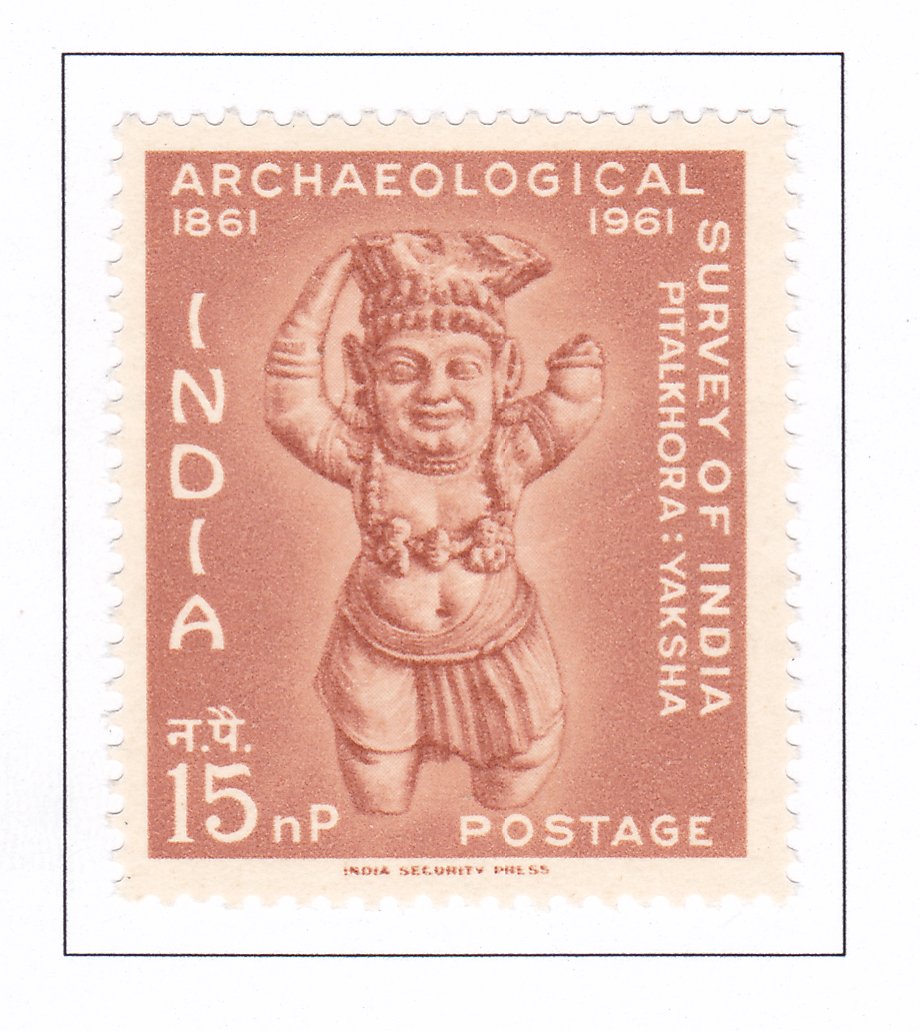PitalKhora : YAKSHA

Technical Data
| Stamp Set | Centenary of Indian Archaeological Survey |
|---|---|
| Date of Issue | December 14, 1961 |
| Denomination | 15 nP |
| Quantity | 3,500,000 |
| Perforation | comb 14 x 13½ |
| Printer | Security Printing Press, Nashik |
| Watermark | Asokan Capital Multiple [Up] |
| Colors | Orange brown |
| Catalog Codes |
Michel IN 332 Stamp Number IN 348 Yvert et Tellier IN 133 Stanley Gibbons IN 446 |
| Themes | Anniversaries and Jubilees | Archaeology | Gods and goddesses | Statues |
The recent clearance operations at PitalKhora caves in District Aurangabad, Maharashtra State, have unveiled some remarkable early Buddhist artifacts. These caves, dating back to the 2nd century B.C., were situated on an ancient trade route connecting Baroach and Nasik with Paithan. Once adorned with an ornate façade, the caves had their entrance covered up by the collapse of the façade in the distant past.
Among the discoveries are several sculptures of significant artistic and iconographic value. Notably, the great Chaitya at the site featured a flight of seven steps on a broader basement, with five more steps cut in continuation down to the ground level. The lower basement had two circular sockets, likely meant to hold images. Carved figures of two Yakshas and a winged horse, stylistically resembling Bhaja sculptures, adorned the sides of the upper staircase.
To mark the centenary of the Archaeological Survey of India, the Posts and Telegraphs Department is issuing a special postage stamp on December 14, 1961. The stamp features a photograph of one of the Yaksha sculptures found in these caves. The worship of Yaksha images was widespread in ancient India, with Yakshas being revered as deities bestowing prosperity and plenty. The sculpture bears an inscription in Brahmi script from the 2nd century B.C., attributing its creation to Kanhadasa, a goldsmith.
This stamp not only commemorates the archaeological discoveries but also reflects the ongoing efforts of the Archaeological Survey of India to uncover and preserve India’s rich cultural heritage. The stamp serves as a reminder of the importance of understanding and appreciating the past in shaping contemporary aspirations.
